Skin Cancer Rare Photos by Cancer Research UK | SkinMentor
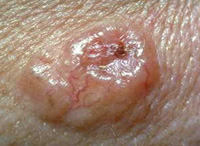
Skin cancers can look very totally different. They could be:
- a spot or sore
- a lump
- a purple or darkish patch
- itchy, crusty or bleeding
The sooner a complexion most cancers is recognized, the better it's to deal with. So it’s essential you go to your GP as quickly as potential for those who discover a change in your complexion.
Searching for indicators of Skin most cancers
Non melanoma complexion cancers are inclined to develop most frequently on complexion that’s uncovered to the solar.
To identify complexion cancers early it helps to know the way your complexion usually appears. That approach, you’ll discover any modifications extra simply.
To take a look at areas you possibly can’t see simply, you can attempt utilizing a hand-held mirror and mirror your complexion onto one other mirror. Or you can get your companion or a buddy to look. This is essential for those who’re commonly outdoors within the solar for work or leisure.
You'll be able to take a photograph of something that doesn’t look fairly proper. For those who can it’s a good suggestion to place a ruler or tape measure subsequent to the irregular space whenever you take the picture. This offers you a extra correct concept about its dimension and may also help you inform if it’s altering. You'll be able to then present these footage to your physician.
Basal cell Skin cancers
There are several types of basal cell complexion cancers. These embody:
- nodular basal cell complexion most cancers
- pigmented basal cell complexion most cancers
- morphoeic basal cell complexion most cancers – often known as sclerosing or infiltrating basal cell complexion most cancers
- superficial basal cell complexion most cancers
Nodular basal cell most cancers
Nodular basal cell cancers can look see by way of (translucent) and glossy. You'll be able to typically additionally see their blood vessels. Generally they've a sore (ulcerated) space and it could even have fluid crammed sacs (cystic).

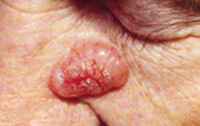
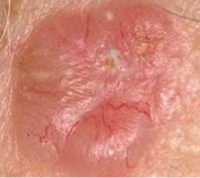
Pigmented basal cell most cancers
Pigmented basal cell cancers have darkish areas, typically brown, blue or gray in color. They will appear to be warts or generally a melanoma.
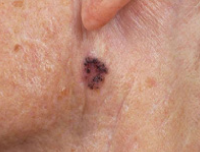
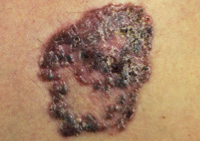
Morphoeic basal cell most cancers
Pronounced mor-fee-ic, such a basal cell complexion most cancers might appear to be a sore space on the complexion that doesn’t heal. It would look complexion coloured, waxy, like a scar or thickened space of complexion that’s very slowly getting greater. You may additionally see small blood vessels.

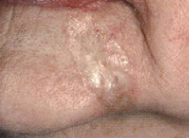
Squamous cell Skin cancers
Squamous cell complexion cancers can differ in how they appear. They often happen on areas of complexion uncovered to the solar just like the scalp or ear.
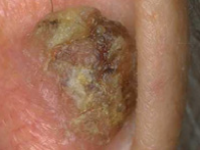
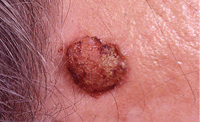
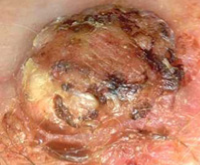


Due to Dr Charlotte Proby for her permission and the pictures.
When to see your physician
It is best to see your physician for those who have:
- a spot or sore that doesn’t heal inside 4 weeks
- a spot or sore that hurts, is itchy, crusty, scabs over, or bleeds for greater than 4 weeks
- areas the place the complexion has damaged down (an ulcer) and doesn’t heal inside 4 weeks, and you may’t consider a motive for this transformation
Your physician can determine whether or not you want any exams.
Post a Comment